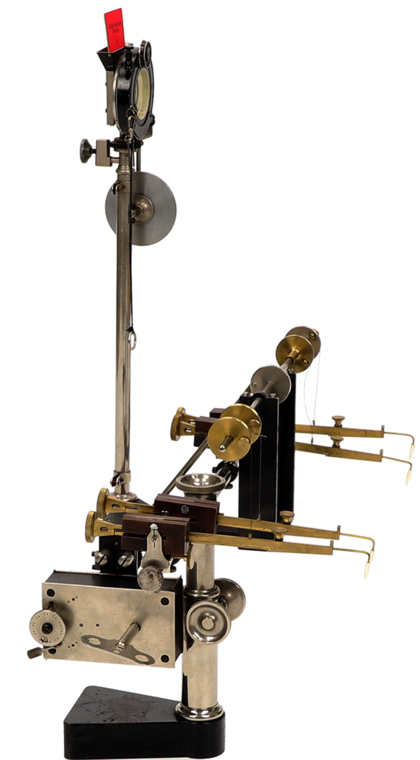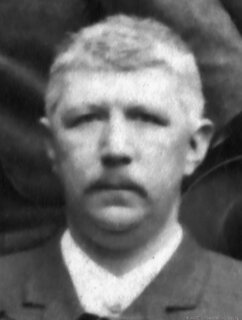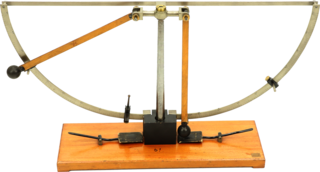
Pauli's Stimulus-Lever-Apparatus
55 x 18 x 20 cm (h x w x d)
The stimulus lever apparatus developped by Richard Pauli (1886-1951) opens up a wide range of experiments on the effect of pressure simuli on fingers. The individual stimulus levers can be very precisely adjusted to the fingers and controlled by a clockwork mechanism. In addition, this apparatus has a tachistoscope for the additional short-time presentation of visual stimuli.




